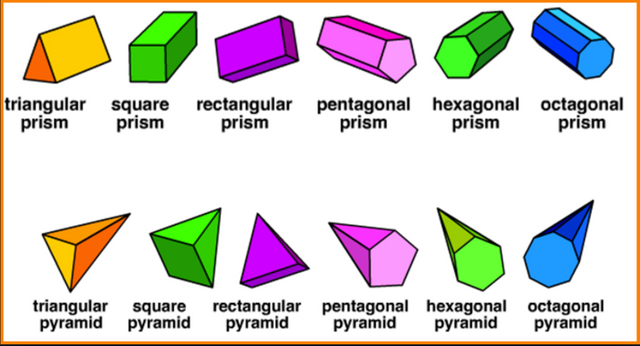
Pyramids
Other than a 3D prism which have 2 opposite equal faces, a pyramid has one base end and an apex. A pyramid has sloping sides which meet at a point called the apex. The apex is made by joining a polygonal base and triangular faces.
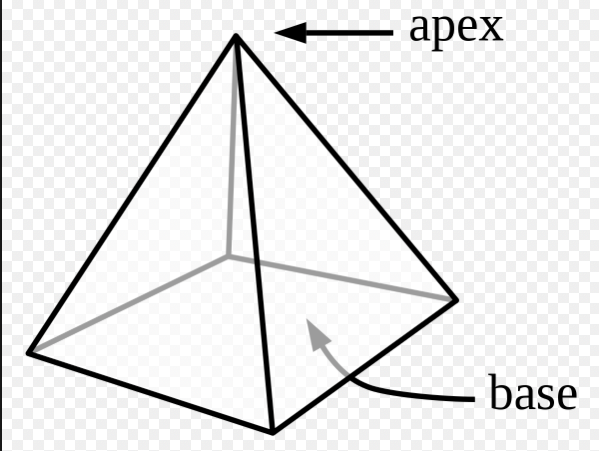
A square-based pyramid and the apex
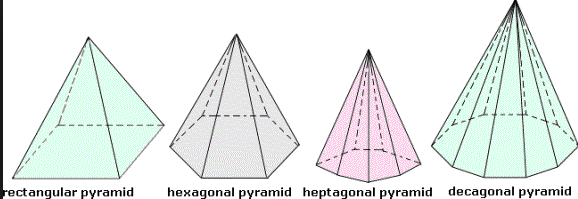
The name of the pyramid will depend on the base end, if it has a square base, it will be a square-based pyramid.
If the base of the pyramid is a pentagon, it will be a pentagonal pyramid etc.
We also get regular and irregular pyramids. If the base of the pyramid is a regular pentagon, it will be a regular pyramid. If the base of the pyramid is irregular, it will be an irregular pyramid.
A pyramid consists of a base and triangular faces.
Right and oblique describes the position of the apex. If the apex of the pyramid is exactly above the centre of the base, the it is called a right pyramid.
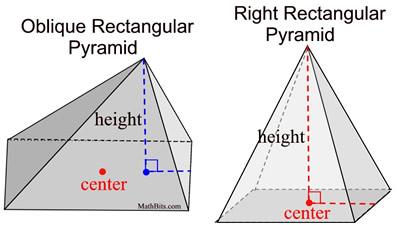
An example of a right and oblique pyramid
If the position of the apex is not directly above the centre of the base, then it is called an oblique pyramid.
The plane of symmetry is the flat surface that can cut the 3D pyramid into two identical shapes.
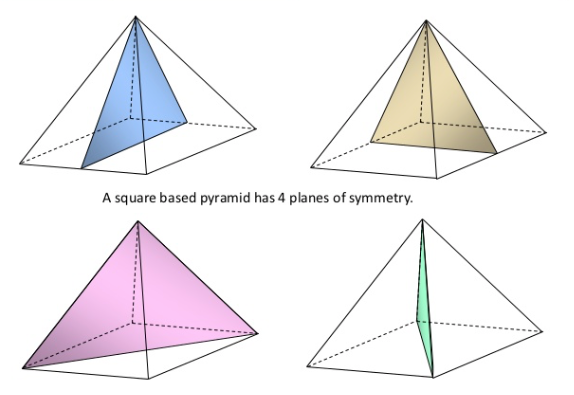
A square based pyramid with 4 planes of symmetry
The following table shows the properties for a triangular pyramid up to a decagonal pyramid.
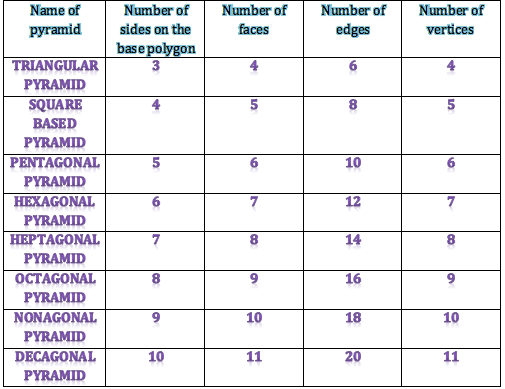
To calculate the number of faces, edges and vertices, we can also use the base of the pyramid just as we did in the previous lesson.
For pyramids, to calculate the number of faces, we can say that it is the base of the pyramid + 1.
Remember that for each side of the base, there will be a triangular face that meets at the apex. If we take a square based pyramid, the base is a square which have 4 sides. Each of the sides will have a triangular face. The 4 triangular faces plus the square base will give us 5 faces in total.
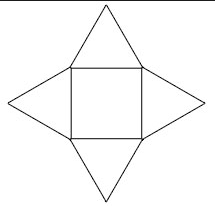
If a square based pyramid is cut open, it will look like the example above. We can see the base is a square and each side of the square has a triangular face, if we add all the faces together there will be 5 faces.
To calculate the number of edges, we use the base and multiply it by 2.
To calculate the number of vertices, we use the base and add 1.
As an example we can use the squared based pyramid again. The base is a square which has 4 vertices, because it is a pyramid, all the points come together at the apex. The apex is also a vertex. In total a square based pyramid will have 5 vertices.

A square based pyramid indicating the number of vertices

Congratulations @apteacher! You have completed some achievement on Steemit and have been rewarded with new badge(s) :
Click on any badge to view your own Board of Honor on SteemitBoard.
To support your work, I also upvoted your post!
For more information about SteemitBoard, click here
If you no longer want to receive notifications, reply to this comment with the word
STOPDo not miss the last announcement from @steemitboard!
Downvoting a post can decrease pending rewards and make it less visible. Common reasons:
Submit